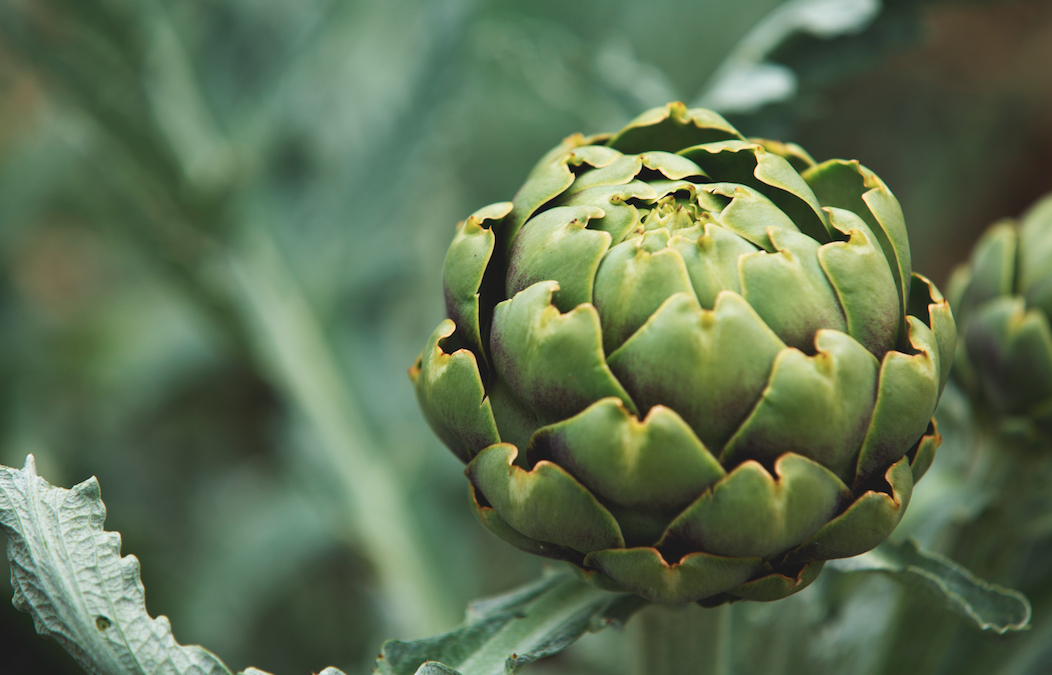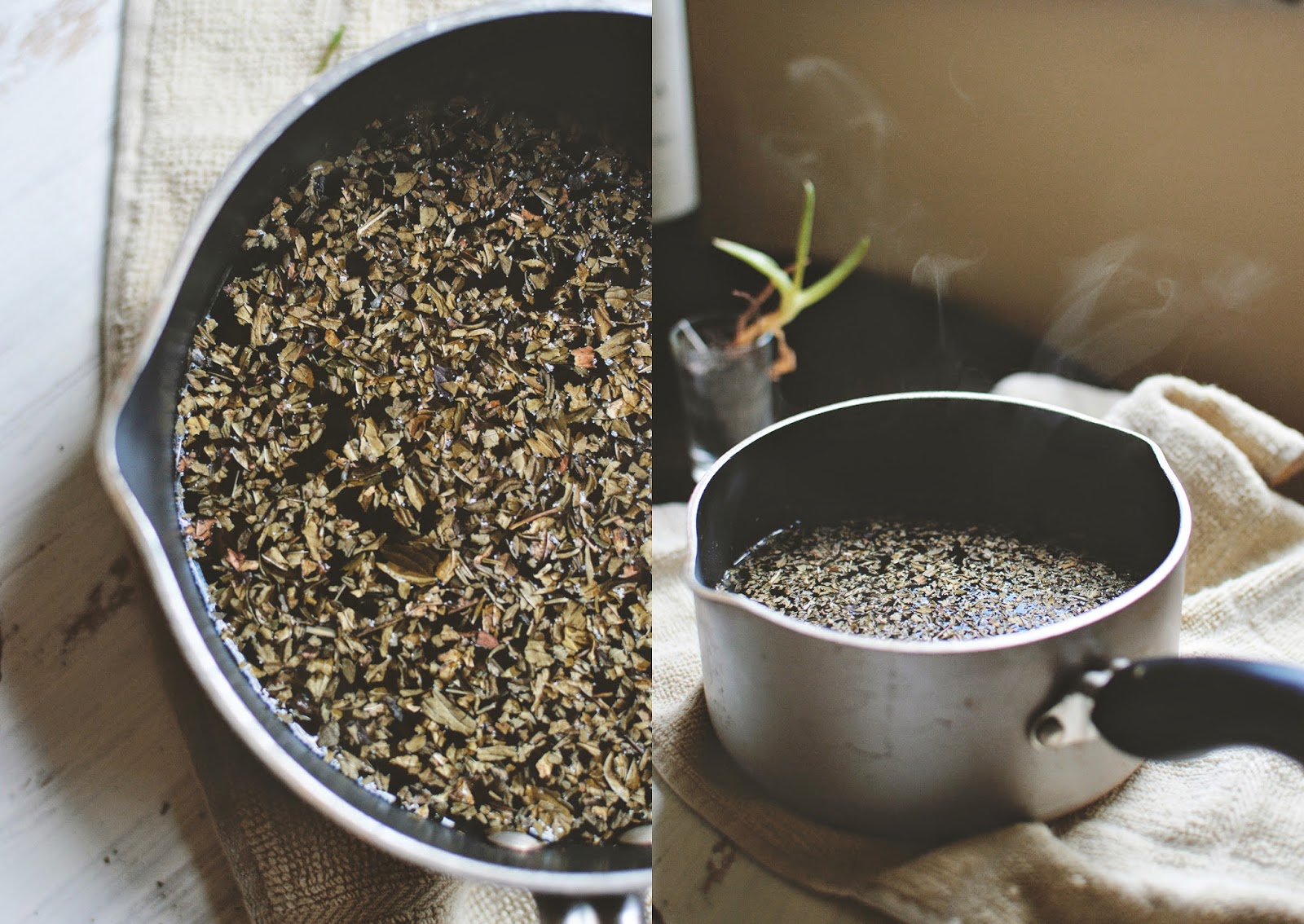Essential oils are a wonderful means of balancing the doshas that you can use every day. Understanding essential oils from an Ayurvedic perspective can help you customize your approach to integrating them into your daily routine. According to this viewpoint, the particular chemical makeup of every essential oil determines whether it has a warming or a cooling effect on the body. This approach to essential oils places each one on a vertical scale, with the oils that are coolest at the top, the oils that are neutral in the middle, and the oils that are warming at the bottom. All essential oils can be placed somewhere on this scale, according to their properties. For example blue chamomile is a cooling oil, lavender exemplifies neutrality, and thyme is a hot essential oil.
Try taking a chamomile and peppermint bath and feel the coolness as you emerge from the tub. Rub a drop of thyme or clove oil into the skin on your forearm, and you’ll experience a warm sensation within 15 minutes. The neutral oils in the middle range, such as lavender, are known as balancers, because if you are feverish, they can help cool you down, and if you are feeling very cold, applying a lavender massage oil to the body can warm you up. Lavender is an oil for all seasons. Balancers will always bring you back toward a neutral, normal state.
In Western chemistry, they scale ranking essential oils according to their thermal impact on the body corresponds to a scale that ranks compounds from high to low in terms of their electronegativity. Electronegativity refers to the relative power of an atom in a molecule to attract electrons from other atoms toward itself. The cooling oils at the top of scale are strongly electronegative. They have extra electrons and take heat away from the body. The warming essential oils at the bottom of the scale are electropositive. They are missing electrons in their outer rings, and are eager and ready to acquire them, producing heat in the body.
Ayurveda also ranks essential oils on a continuum that runs from wet to dry. Wet oils, such as geranium and rose have an affinity for water. Another term for oils with this property is hydrophilic (“water loving”). Wet oils typically contain high levels of alcohols, which act as an emulsifier when you put them in bathwater, breaking the oil into tiny droplets that disperse in the water and form an emulsion. Dry oils, such as citrus and pine, consist almost exclusively of terpenes, which are hydrophobic and lipophilic. In other words they don’t mix with water, but, rather, have an affinity for and the ability to mix with fats. They will float on the surface of the bathwater and form a “ring” around the inside surface of the tub. Neutral oils which include clary sage, Roman chamomile, basil, anise, and tarragon as well as lavender, are neither wet nor dry.
Vata Balancing
Because the vata dosha is light, dry, mobile, and cold, an imbalance of this energy is treated with oils that are wet, heavy, calming, and warming. Because sweet, sour, and salty tastes can be used to reduce excess vata, oils derived from botanicals with these properties are often a good choice for treating vata disorders. There are two types of vata disorders to consider. One is known as obstructed vata, where an accumulation of vata and toxic residues (ama) due to erratic eating habits, poor diet, and irregular elimination blocks the flow of biological materials and nutrients through the channels of the body. Like kapha excess, obstructed vata is treated for a short period of time to remove the blockages. The other type of imbalance is vata-caused deficiency, which occurs when a vata disturbance leads to dry, atrophied tissues and emaciation. These symptoms of vata-caused deficiency resemble the effects of accelerated aging.
Among the best remedies for both types of vata imbalance are the following botanical oils: ginger, oregano, orange, eucalyptus, cumin, cinnamon, clove, celery seed, black pepper, bergamot, bay, calamus, camphor, marjoram, arnica, ajwain, caraway, thyme, sage, rosewood, lemon, and nutmeg. These oils increase digestive fire, flush out toxins, increase internal heat, and strengthen circulation. They are contraindicated for conditions caused by extreme vata aggravation, such as dehydration or inflamed mucous membranes.
Vata-caused deficiency requires oils derived from nutritive herbs that will build the tissues, such as angelica, clary sage, myrrh, parsley, tarragon, vanilla, rose, and jasmine (avoid overuse of rose and jasmine, which may prove too cooling for vata types). These oils help relieve menstrual cramping, build the blood, moisten and nourish the sexual organs, boost the immune system, strengthen organs weakened by disease, and alleviate the effects of poor nutrition and aging.
Pitta Balancing
Because pitta is hot and wet, it is best managed with cooling, drying, nutritive, and calming oils. The tastes for reducing pitta are sweet, astringent, and bitter. Oils extracted from cooling carminatives, such as aromatic spices, help relieve burning diarrhea and digestive complaints caused by accumulations of excess pitta in the small intestine. These oils include chamomile, coriander, cumin, dill, fennel, lavender, lemon, lemon balm, lime, neroli, peppermint, spearmint, and wintergreen.
Calendula, carrot seed, lemon, St. John’s wort, turmeric, wintergreen, and yarrow oils are also helpful for managing pitta-related disorders. These astringent oils reduce excess secretions of gastric juices and discharges of tissue fluids without completely drying them up and help tighten and heal tissues and stop bleeding.
Cooling essential oils that purify the blood, fight infections, reduce fevers, and promote healing include aloe vera, coriander, cumin, dill, jasmine, neem, sandalwood, spearmint, tagetes, turmeric, yarrow, and blue chamomile. To nourish the tissues of the body, reduce inflammation, restore secretions that have dried up from pitta’s excessive heat, and build the blood and lymph system, choose oils made from angelica, carrot seed, cedar wood, neem, neroli, and spikenard. When pitta aggravation leads to energy burnout, angelica, brahmi, carrot seed, cedar wood, rose, and jatamansi oils help rejuvenate the body and mind, increasing awareness and promoting behavioral changes and more dynamic and expansive thinking.
To reduce pitta’s heat and cool the liver, use oils from diuretic herbs such as coriander, fennel, lavender, lemongrass, sandalwood, and spearmint. Antipyretic oils that help pacify pitta’s fire include jasmine, lime, neem, tagetes, vetiver, and neroli.
Kapha Balancing
Composed of earth and water, kapha is predominantly cold, moist, slow, and heavy in nature and can be balanced with substances that are warming, drying, lightening, and stimulating, such as oils made from plants that taste pungent, bitter, and astringent. The most important of these properties is pungency because its light, hot, dry nature is diametrically opposed to kapha’s defining characteristics.
By strengthening digestive fire, stimulant and carminative essential oils help reverse the mental and physical sluggishness associated with a kapha imbalance. These oils include ajwain, anise, basil, bay, black pepper, calamus, cardamom, cayenne, cinnamon, cloves, garlic, ginger, juniper berry, mustard, nutmeg, orange peel, oregano, parsley, pennyroyal, saffron, thyme, turmeric, and valerian.
To reduce the fluid buildup associated with kapha aggravation, use oils from diuretic herbs, such ajwain, cinnamon, coriander, fennel, garlic, juniper berry, lemongrass, parsley, and spearmint. Diaphoretic oils, which induce sweating—such as ajwain, angelica, basil, camphor, cardamom, cinnamon, cloves, eucalyptus, ginger, juniper berry, lemongrass, mugwort, oregano, sage, and thyme—are good for this purpose, too. These oils also help cleanse the blood and lymph.
Kapha imbalances often manifest in the accumulation of excess mucus in the lungs and stomach. Emetic oils can help expel this buildup but should be only administered by a trained panchakarma therapist.
Disclaimer
The sole purpose of these articles is to provide information about the tradition of Ayurveda. This information is not intended for use in the diagnosis, treatment, cure or prevention of any disease.

















